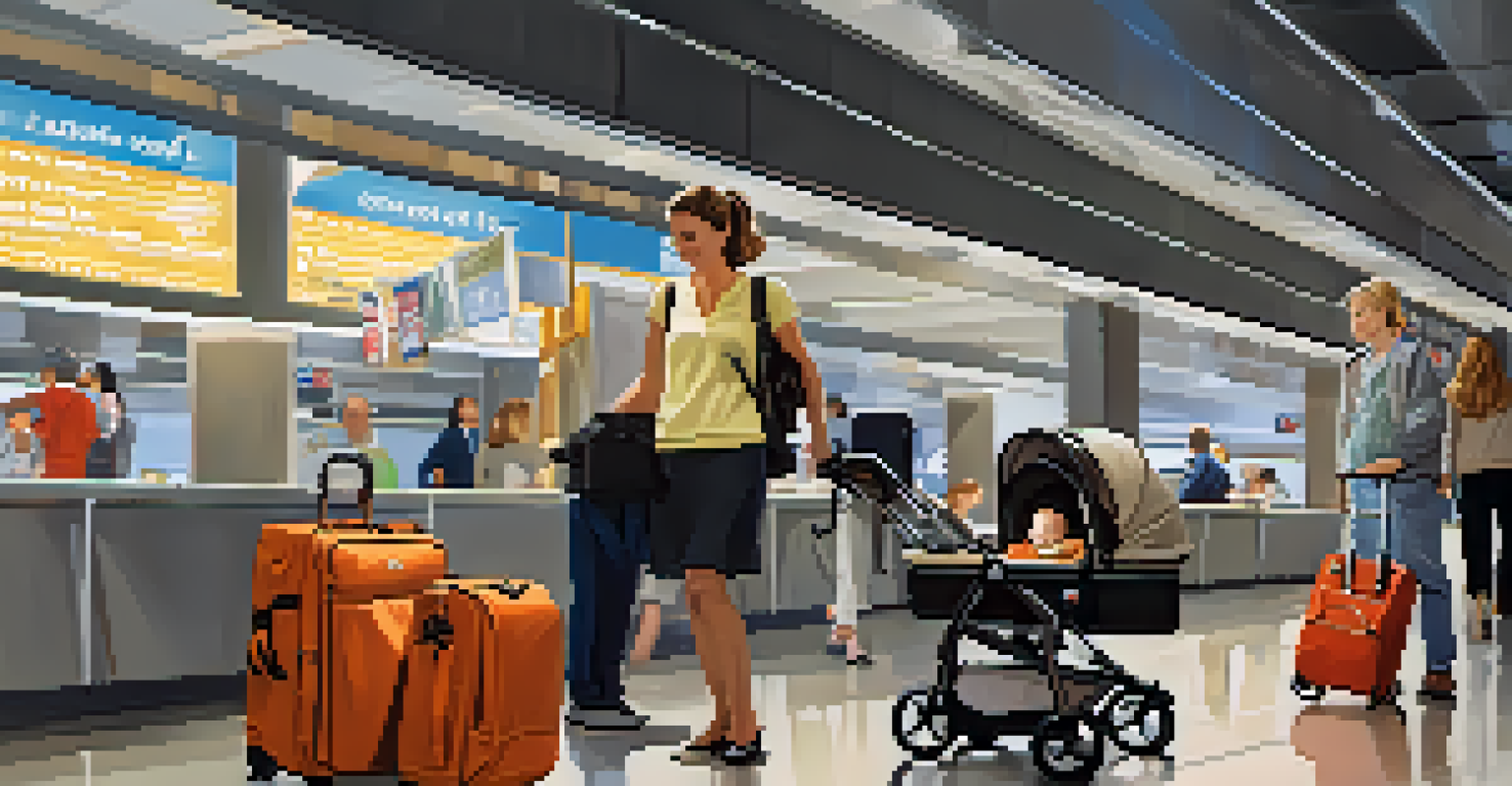Essential Packing List for Traveling with Young Children

Start with the Basics: Clothing Essentials
When packing for young children, start with the basics: clothing. Choose versatile outfits that can be mixed and matched to save space. Remember to pack enough layers for unpredictable weather, especially when traveling to new climates.
Travel is the only thing you buy that makes you richer.
Don't forget about the essentials: pajamas, socks, and comfortable shoes. It's a good idea to include a light jacket or sweater, even in warmer destinations, as it can get chilly in the evenings. Keeping your little ones comfortable is key to ensuring a smooth trip.
Lastly, consider packing a few extra outfits for unexpected spills or messes. Children are known for their ability to get dirty quickly, so having a backup can save you from potential meltdowns.
Travel Documents and Identification for Kids
Never underestimate the importance of travel documents when traveling with kids. Ensure you have their passports, birth certificates, or any necessary identification ready and accessible. If you're flying, check the airline's requirements for minors.

It's also a good idea to carry copies of these documents in case of loss or theft. This way, you can expedite any necessary processes should something go awry. Keeping these documents in a waterproof pouch can add an extra layer of protection.
Pack Smart with Essentials
Start your travel preparation by packing versatile clothing, essential documents, and a well-stocked first-aid kit to ensure a smooth experience.
Finally, consider having an emergency contact card for your child, including your contact information and any medical needs. This small detail can provide peace of mind during your travels.
Health and Safety: First-Aid Kit Must-Haves
When traveling with young children, a well-stocked first-aid kit is essential. Make sure to include items like adhesive bandages, antiseptic wipes, and gauze for minor injuries. You should also pack any necessary medications your child may need.
The journey not the arrival matters.
In addition to basic supplies, consider including items like insect repellent and sunscreen, especially if you're heading to outdoor destinations. Protecting your child from sunburn and bug bites can make all the difference in their travel experience.
Lastly, don't forget to include a thermometer and any specific prescriptions your child may require. Being prepared for health-related issues can help you focus on making lasting memories instead of dealing with unexpected problems.
Snacks and Meals: Keeping Little Tummies Happy
Traveling can disrupt meal schedules, so packing snacks is crucial for keeping your child satisfied. Opt for non-perishable, healthy options like granola bars, dried fruits, and nuts. These can be easily packed and provide energy during long days of exploring.
Consider bringing a refillable water bottle to keep everyone hydrated. Many airports and travel destinations have water fountains where you can refill them, saving you money and reducing waste. Staying hydrated is key to maintaining energy levels, especially for active little ones.
Keep Kids Entertained
Bring a variety of toys, snacks, and entertainment options to keep your little ones engaged and happy during long journeys.
If your child has dietary restrictions, plan ahead and pack specific snacks that cater to their needs. This preparation will not only avoid potential tantrums but also ensure your child stays nourished throughout the trip.
Toys and Entertainment for Travel Downtime
Long travel times can be tough on young kids, making it essential to bring along entertainment. Pack a variety of small toys, coloring books, and crayons to keep their minds engaged. Choosing lightweight and compact items can save you space in your luggage.
Consider downloading children's audiobooks or music on your device. These can be incredibly helpful during longer journeys, providing both entertainment and a calming atmosphere. Don't forget a set of headphones designed for little ones to avoid disturbing fellow travelers.
Lastly, interactive games or puzzles can also be a hit. They not only pass the time but can also provide opportunities for family bonding while you travel.
Comfort Items: Bringing Home on the Road
Familiar comfort items can help your child feel secure in new environments. Bring along their favorite blanket, stuffed animal, or even a special pillow. These items can ease anxiety and help with sleep, especially in unfamiliar hotel rooms.
If your child has a specific bedtime routine, try to maintain it while traveling. Packing a nightlight or a bedtime storybook can help recreate that comforting atmosphere. Consistency can make a world of difference in how well your child adjusts to travel.
Stay Flexible with Plans
Create a flexible itinerary that allows for downtime and spontaneity, accommodating your child's needs and energy levels during travel.
Also, consider a portable white noise machine or app. These can drown out unfamiliar sounds, helping your child sleep more soundly in new places.
Travel Gear: Choosing the Right Equipment
Choosing the right travel gear is crucial when traveling with young children. A lightweight stroller or baby carrier can make navigating airports and attractions much easier. Make sure to select gear that folds easily and is comfortable for both you and your child.
If you’re traveling with infants, consider packing a travel crib or portable playpen. This provides a safe space for your little one to sleep or play, making it easier to manage your schedule without worrying about where they'll rest.

Lastly, don’t forget about car seats if you're traveling by car or renting a vehicle. Many rental companies offer car seats, but bringing your own can ensure you have a familiar and safe seat for your child.
Planning: Creating a Flexible Itinerary
When traveling with young children, flexibility is key. Create an itinerary that allows for downtime and spontaneity to accommodate your child’s unpredictable moods and energy levels. Over-scheduling can lead to exhaustion for everyone involved.
Include buffer time between activities to ensure you're not rushing and can respond to your child's needs. This approach not only helps reduce stress but also allows for unexpected adventures or discoveries along the way.
Lastly, keep in mind that your destination may have age-appropriate attractions. Researching these in advance can help create a balanced mix of activities that everyone in the family will enjoy.